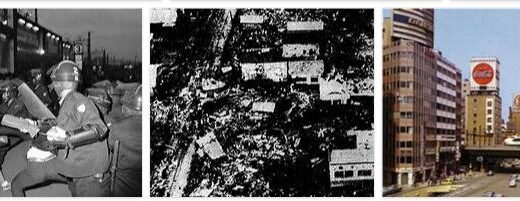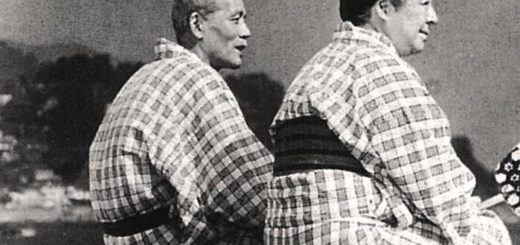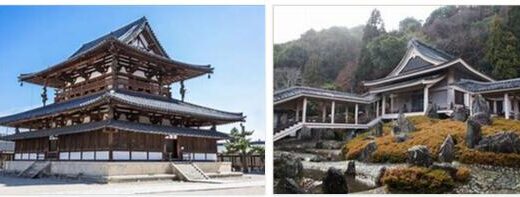Japan Cinematography – from the Origins to the World War II Part I
Thomas A. Edison’s kinetoscope was introduced in Japan in November 1896. In February of the following year it was already the turn of the Cinématographe by the brothers Louis and Auguste Lumière. The first Japanese films were made in 1899, including Shibata Tsunekichi’s Momijigari (A Walk to Enjoy the View of Autumn Maples), a costume drama that featured kabuki actors. The first movie theater was built in 1903, in Asakusa, Tokyo’s entertainment district. Early Japanese cinema was profoundly influenced both by shinpa theater, born as a renewal of kabuki and particularly prone to melodramatic subjects, and by kabuki itself. The influence of the shinpa was essentially exercised on contemporary setting cinema (gendaigeki),
According to ASK4BEAUTY, Makino Shōzō is considered the first real director of Japanese cinema. His name is also linked to the different versions – at least a dozen based on available information – that he made of Chūshingura (The Loyal Vassals’ Chest) between 1910 and 1928. The story is that of the epic story of a group of forty-seven rōnin (masterless samurai) who, in the 18th century, avenge their master, unjustly forced to kill himself, before committing, in turn, ritual suicide.
In 1912 the Nippon Katsudō Shashin Kabushi-ki Kaisha (Japanese Society of Moving Images) was born, known as Nikkatsu, the first Japanese major. It opened its studios in Tokyo and Kyoto, making gendaigeki films in the first of the two cities and jidaigeki films in the second. Thus was born institutionally that division of national production into two major genres that would mark a large part of the history of Japanese cinema. The films of those years were still conceived in a strongly theatrical way, the shots tended to last for an entire scene, the fields were overall plans and the female roles were played by male actors called onnagata or oyama. But, above all, Japanese silent cinema was marked by the experience of the benshi, the narrators who accompanied those silent projections, commenting on the story and reciting the dialogues of the characters. The existence of silent film narrators was not exclusive to Japan, however in this country it assumed a particular importance. The benshi, in fact, became real stars and it was not uncommon for viewers of the time to go to the cinema first of all to listen to a particular narrator rather than another. Film benshi originated both from that vast tradition of oral narratives typical of Japanese popular culture – such as historical narratives, kōdan, and comic narratives, rakugo – and from the practical one, common to nō, kabuki and bunraku puppet theater, to resort to narrative voices that, in addition to contributing to the advancement of history, they could replace those of the actors on stage. Around the mid-10s, Japanese films began to use different cinematic techniques such as splitting scenes into multiple shots, close-up, reverse shot, camera movement and flashback. The diffusion of American cinema and, subsequently, of European art, also contributed to all this. Another important step forward in the modernization of Japanese cinema was determined, in 1920, by the birth of a new production company, the important Shōchiku. Using the collaboration of intellectuals such as Osanai Kaoru and Tanizaki Jun’ichirō, Shōchiku started a series of productions in which actresses were used instead of men in women’s clothes; we looked at the repertoire of shingeki (a new theatrical current that tried to modernize the shinpa, referring to Western texts, such as those of H. Ibsen and AP Chekhov), new figures of language were introduced, such as alternate editing, for example. in the famous Rōjō no reikon (1921, Anime sulla strada), made by Murata Minoru under the supervision of Osanai.
In 1923 the Japan was hit by a terrible earthquake that destroyed a large part of the city of Tokyo. For a short time, the film industry had to move to Kyoto, until then the cradle of period films. The Shōchiku, led by the skilled Kido Shirō, however, continued to produce mainly contemporary films, permeated by a considerable realism, by a certain attention to everyday events, the so-called shomingeki (ordinary people’s dramas). In his studies leading directors such as Gosho Heinosuke, Saitō Torajirō and Ozu Yasujirō were formed. The latter, in particular, looked at Western cinema in the 1920s, as did Mizoguchi Kenji for his part., under contract with Nikkatsu. In the 1940s and 1950s these two filmmakers, together with Kurosawa Akira, consolidated their role as authentic masters of Japanese cinema. In the 1920s, however, the artistically highest points of a cinema inspired by the experience of European art film were represented by the independent productions of Kinugasa Teinosuke: Kurutta ippeiji (1926, A page of madness), a visionary journey between reality and fiction in a psychiatric hospital, influenced by the German and Soviet avant-gardes, and Jūjirō (1928, Incroci), which recalls the expressionist Kammerspiel.



